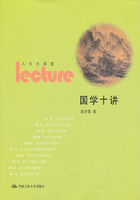When they had gone from house to house and collected all the money they could, they laid the wren on a bier and carried it in procession to the parish churchyard, where they made a grave and buried it with the utmost solemnity, singing dirges over her in the Manks language, which they call her knell; after which Christmas begins. The burial over, the company outside the churchyard formed a circle and danced to music.
A writer of the eighteenth century says that in Ireland the wren is still hunted and killed by the peasants on Christmas Day, and on the following (St.
Stephen's Day) he is carried about, hung by the leg, in the centre of two hoops, crossing each other at right angles, and a procession made in every village, of men, women, and children, singing an Irish catch, importing him to be the king of all birds. Down to the present time the hunting of the wren still takes place in parts of Leinster and Connaught. On Christmas Day or St.
Stephen's Day the boys hunt and kill the wren, fasten it in the middle of a mass of holly and ivy on the top of a broomstick, and on St. Stephen's Day go about with it from house to house, singing:
The wren, the wren, the king of all birds, St. Stephen's Day was caught in the furze;
Although he is little, his family's great, I pray you, good landlady, give us a treat.
Money or food (bread, butter, eggs, etc.) were given them, upon which they feasted in the evening.
In the first half of the nineteenth century similar customs were still observed in various parts of the south of France. Thus at Carcassone, every year on the first Sunday of December the young people of the street Saint Jean used to go out of the town armed with sticks, with which they beat the bushes, looking for wrens. The first to strike down one of these birds was proclaimed King. Then they returned to the town in procession, headed by the King, who carried the wren on a pole. On the evening of the last day of the year the King and all who had hunted the wren marched through the streets of the town to the light of torches, with drums beating and fifes playing in front of them. At the door of every house they stopped, and one of them wrote with chalk on the door vive le roi! with the number of the year which was about to begin. On the morning of Twelfth Day the King again marched in procession with great pomp, wearing a crown and a blue mantle and carrying a sceptre. In front of him was borne the wren fastened to the top of a pole, which was adorned with a verdant wreath of olive, of oak, and sometimes of mistletoe grown on an oak. After hearing high mass in the parish church of St. Vincent, surrounded by his officers and guards, the King visited the bishop, the mayor, the magistrates, and the chief inhabitants, collecting money to defray the expenses of the royal banquet which took place in the evening and wound up with a dance.
The parallelism between this custom of hunting the wren and some of those which we have considered, especially the Gilyak procession with the bear, and the Indian one with the snake, seems too close to allow us to doubt that they all belong to the same circle of ideas. The worshipful animal is killed with special solemnity once a year; and before or immediately after death he is promenaded from door to door, that each of his worshippers may receive a portion of the divine virtues that are supposed to emanate from the dead or dying god. Religious processions of this sort must have had a great place in the ritual of European peoples in prehistoric times, if we may judge from the numerous traces of them which have survived in folk-custom. For example, on the last day of the year, or Hogmanay as it was called, it used to be customary in the Highlands of Scotland for a man to dress himself up in a cow's hide and thus attired to go from house to house, attended by young fellows, each of them armed with a staff, to which a bit of raw hide was tied.
Round every house the hide-clad man used to run thrice deiseal, that is, according to the course of the sun, so as to keep the house on his right hand; while the others pursued him, beating the hide with their staves and thereby making a loud noise like the beating of a drum. In this disorderly procession they also struck the walls of the house. On being admitted, one of the party, standing within the threshold, pronounced a blessing on the family in these words: May God bless the house and all that belongs to it, cattle, stones, and timber! In plenty of meat, of bed and body clothes, and health of men may it ever abound! Then each of the party singed in the fire a little bit of the hide which was tied to his staff; and having done so he applied the singed hide to the nose of every person and of every domestic animal belonging to the house. This was imagined to secure them from diseases and other misfortunes, particularly from witchcraft, throughout the ensuing year. The whole ceremony was called calluinn because of the great noise made in beating the hide. It was observed in the Hebrides, including St. Kilda, down to the second half of the eighteenth century at least, and it seems to have survived well into the nineteenth century.















